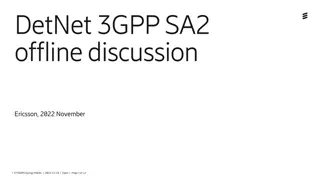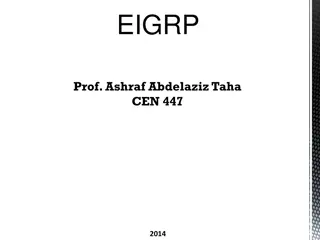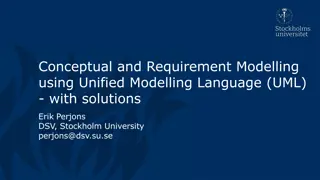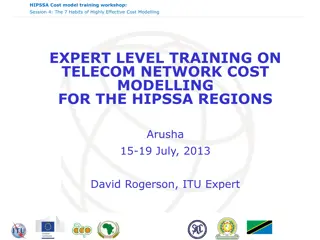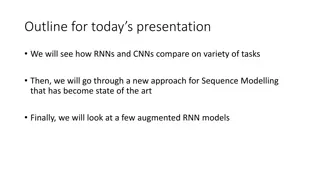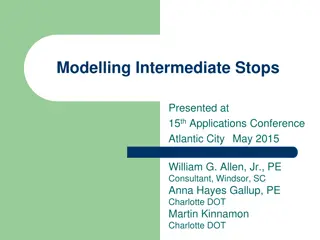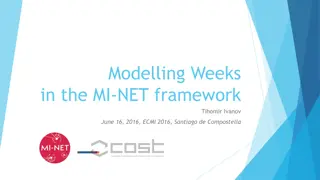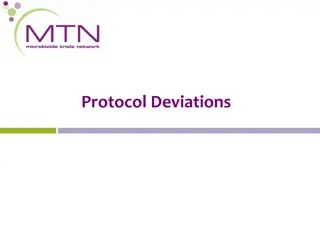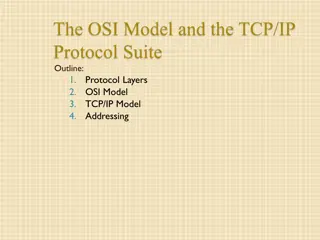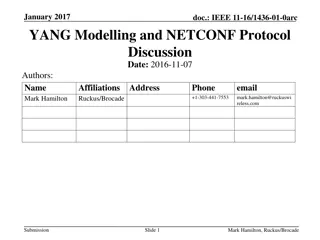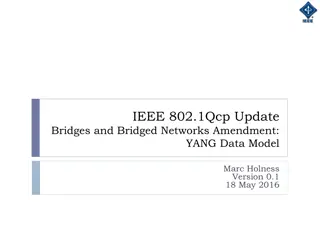Introduction to YANG Modelling and NETCONF Protocol
This presentation from November 2016 provides a brief introduction to YANG modelling and the NETCONF protocol for managing system configuration. It discusses the purpose and benefits of YANG, highlighting its role as a data modeling language for the NETCONF protocol and detailing its features such as human readability, hierarchical data models, extensibility, and formal constraints. The content emphasizes the importance of YANG in network configuration and state data manipulation, offering insights into its utilization in the 802.11 Std.
Download Presentation

Please find below an Image/Link to download the presentation.
The content on the website is provided AS IS for your information and personal use only. It may not be sold, licensed, or shared on other websites without obtaining consent from the author.If you encounter any issues during the download, it is possible that the publisher has removed the file from their server.
You are allowed to download the files provided on this website for personal or commercial use, subject to the condition that they are used lawfully. All files are the property of their respective owners.
The content on the website is provided AS IS for your information and personal use only. It may not be sold, licensed, or shared on other websites without obtaining consent from the author.
E N D
Presentation Transcript
November 2016 YANG Modelling and NETCONF Protocol Discussion Date: 2016-11-07 Authors: doc.: IEEE 11-16/1436-00-0arc Name Mark Hamilton Affiliations Address Ruckus Wireless Phone +1-303-441-7553 email mark.hamilton@ruckuswi reless.com Sli de 1 Submission Slide 1 Mark Hamilton, Ruckus Wireless
November 2016 doc.: IEEE 11-16/1436-00-0arc Abstract This presentation has a VERY brief introduction to YANG modelling and NETCONF protocol, for managing configuration of systems, in preparation for consideration by ARC, and potential recommendation to 802.11 WG on use of these methods in the 802.11 Std. Sli de 2 Submission Slide 2 Mark Hamilton, Ruckus Wireless
November 2016 doc.: IEEE 11-16/1436-00-0arc Some useful web-sites, I ve found http://www.yang- central.org/twiki/bin/view/Main/WebHome https://en.wikipedia.org/wiki/YANG http://www.slideshare.net/cmoberg/a- 30minute-introduction-to-netconf-and-yang Sli de 3 Submission Slide 3 Mark Hamilton, Ruckus Wireless
November 2016 doc.: IEEE 11-16/1436-00-0arc Purpose of YANG YANG is a data modeling language used to model configuration and state data manipulated by the Network Configuration Protocol (NETCONF), NETCONF remote procedure calls, and NETCONF notifications. YANG is used to model the operations and content layers of NETCONF (see the NETCONF Configuration Protocol [RFC4741], Section 1.1). YANG strikes a balance between high-level data modeling and low-level bits-on-the-wire encoding. The reader of a YANG module can see the high-level view of the data model while understanding how the data will be encoded in NETCONF operations. Per IETF RFC 6020 Sli de 4 Submission Slide 4 Mark Hamilton, Ruckus Wireless
November 2016 doc.: IEEE 11-16/1436-00-0arc Benefits of YANG YANG is a data modeling language designed to write data models for the NETCONF protocol. It provides the following features: Human readable, and easy to learn representation Hierarchical configuration data models Reusable types and groupings (structured types) Extensibility through augmentation mechanisms Supports definition of operations (RPCs) Formal constraints for configuration validation Data modularity through modules and sub-modules Well defined versioning rules. Exerpt from Carl Moberg s 30-minute Introduction to NETCONF and YANG (http://www.slideshare.net/cmoberg/a-30minute-introduction-to-netconf-and-yang ) Sli de 5 Submission Slide 5 Mark Hamilton, Ruckus Wireless
November 2016 doc.: IEEE 11-16/1436-00-0arc Purpose of NETCONF The NETCONF protocol defines a simple mechanism through which a network device can be managed, configuration data information can be retrieved, and new configuration data can be uploaded and manipulated. The protocol allows the device to expose a full, formal application programming interface (API). Applications can use this straightforward API to send and receive full and partial configuration data sets. The NETCONF protocol uses a remote procedure call (RPC) paradigm. A client encodes an RPC in XML [W3C.REC-xml- 20001006] and sends it to a server using a secure, connection- oriented session. The server responds with a reply encoded in XML. Per IETF RFC 6241 Sli de 6 Submission Slide 6 Mark Hamilton, Ruckus Wireless







